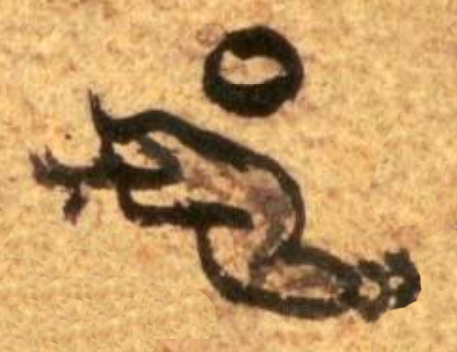Ce Coatl (CQ)
This combined simplex glyph-notation is a personal name and a date, Ce Coatl or 1-Coatl (One Serpent or 1-Serpent). In context, it appears next to a seated man wearing a cape tied at the shoulder. The snake/serpent, shown in profile and facing toward the viewer's left, has a kink or curve in its body. An eye is visible, along with a rattler tail and a protruding, bifurcated tongue. The snake is painted gray or purple. The notation for "one" is one small circle. It is not painted inside, just left natural.
Stephanie Wood
Ce Coatl refers to a day in the tonalpohuallli, 260-day divinatory calendar, and calendrics played an important role in Mixtecs' religious views of the cosmos. It is not unusual for people (in this case a male) to take a calendrical name. This "Coatl" may be the person who had rights to the milpa mentioned elsewhere on this manuscript. See below.
Stephanie Wood
covers ruling men and women of Tecamachalco through 1593
Randall Rodríguez
one, uno, snakes, serpents, serpientes, víboras, dates, fetchas, names, nombres, numbers, números, cohuatl, crótalos

ce, one, https://nahuatl.wired-humanities.org/content/ce
coa(tl), serpent, https://nahuatl.wired-humanities.org/content/coatl
Uno Serpiente, 1-Serpiente
Stephanie Wood
The Codex Quetzalecatzin, aka Mapa de Ecatepec-Huitziltepec, Codex Ehecatepec-Huitziltepec, or Charles Ratton Codex. Library of Congress. https://www.loc.gov/item/2017590521/
The Library of Congress, current custodian of this pictorial Mexican manuscript, hosts a digital version online. It is not copyright protected.





